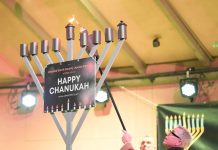It began in the little mining camp of Real de Santa Ana, Baja California. Jose Francisco Ortega had already completed 10 years in the king’s army and was in 1768 the Superintendent of Osio’s gold and silver mine at Real de Santa Ana.
To secure Alta California for Spain and protect it from Russian and English encroachment, King Carlos appointed Jose Galvez to organize an expedition from Loreto, Baja California to march northward. With the promise of Lieutenancy, Jose Ortega was recruited to serve as guide for the fourth expedition to be led by Portola and Father Junipero Serra. Ortega entered Alta California on June 27, 1769, three days ahead of the expedition.
With Ortega on the first expedition in 1769 were Jose Gabriel Arce, an old man who returned to Baja in 1772 because he became ill. He left with Ortega two of his children; Jose Joaquin, and Gertrudis, who later married Ortega’s son, Ygnacio Maria Ortega (Don of Rancho San Ysidro). Jose Ortega would raise these children as his own.
Jose Maria Soberanes was a handsome young man with a melodious voice and a member of the 1769 Portola expedition. He was given the job of scout on two expeditions of 1772 and 1776, to establish mail routes to Mexico City. Martina Ana Josepha de Castro was 18 years old when she traveled with the de Anza expedition of 1776. She would meet the young Jose Maria Soberanes and they soon married in Monterey. They could have been one of California’s first romances.
Maria, their second child born in 1779, married Apolinario Bernal, who was also of the Anza expedition. These two discovered the sick body of John Gilroy on the beach and took him to Rancho San Ysidro where he was nursed back to good health.
Jose Ortega was the first commander of the San Diego Presidio, led the Portola expedition to San Francisco Bay where he was first of the expedition to sight it, was commander of Santa Barbara and Monterey Presidios, as well as Loreto in Baja California. He headed the military at the founding of San Buenaventura and San Capistrano missions and was lieutenant governor of Baja California. In 1771 he was called to Mexico City where he was made Apostolic Syndic, a position similar to collector of mission funds.
Jose Ortega applied for retirement several times, but his superiors would not approve of it, he was too good a work horse. He was well educated and wrote in a concise and precise hand, doing much of the correspondence for other officers and padres as well as for his men. He died on his way to Santa Barbara from his home at El Refugio after falling from his saddle. His widow Maria Astoria Victoria Carillo was awarded $9,150 as a pension.
•••
The winning guess about the use of a tool pictured in the March 18 edition of Preserving the Past came on the first day of responses but the emails weren’t discovered until months later (long enough to become history in themselves).
The winners are Ray and Marcia Camino. Though presently based in Arizona, both have deep roots in Gilroy. Marcia’s parents were the late Congressman Charles and his wife Joan Gubser, Ray’s parents were Ernie and Ida Camino who founded the well-known Camino Plumbing company.
They identified the tool as a “Cast iron ball and ring shoe stretcher used to stretch tight parts of footwear to ease pressure on bunions, corns and hammertoes.” What’s more, these stretchers are being made again and for a mere $44.95 you can buy one on Amazon.
•••
To read an extended version of last month’s column on Bill Economou, visit bit.ly/3tA8SB0.
Questions, comments and other information can be sent to gi***********@***il.com.














